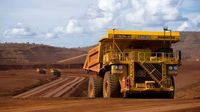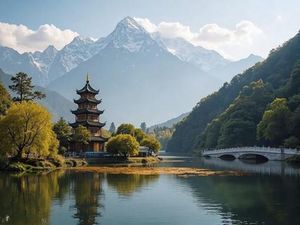India is charting a new course in its quest for critical minerals, with a flurry of discoveries and policy moves aimed at breaking its long-standing reliance on China for rare earth elements (REEs). These minerals, vital for everything from electric vehicles (EVs) to advanced defense systems, have become the focus of both national ambition and global anxiety as supply chains face unprecedented strain.
At the heart of this shift is a series of fresh geological finds. According to a recent study by the Ministry of Mines, Arunachal Pradesh’s Papum Pare district boasts notably high neodymium content—a key ingredient for EV motors and advanced electronics. But Papum Pare is only the tip of the iceberg. Assam’s Karbi Anglong and Meghalaya’s Sung Valley have also been flagged for their REE-rich soils, while Madhya Pradesh’s Singrauli coalfields have revealed what officials describe as "promising" deposits. These discoveries, mapped across forests, hills, and coalfields, signal that India’s strategic metals reach far beyond the country’s familiar beach sands and alluvial beds (as highlighted by NewsBytesApp and The Economic Times).
Yet, for all the optimism these new hotspots inspire, the reality of India’s rare earth predicament remains sobering. In a written reply to the Rajya Sabha on August 1, 2025, it was revealed that China accounts for a staggering 85-90% of India’s rare earth magnet import volumes and 60-80% of import value in two key categories. This dependency is not just a statistical quirk; it’s a strategic vulnerability that has come into sharp focus amid Beijing’s recent export restrictions.
As reported by The Economic Times, the global ripple effects of China’s export curbs—imposed in April 2025—have been acutely felt across Indian industry, especially among automakers. "India simply can’t keep all its eggs in one basket. China will extract its pound of flesh, then open the gates—but by then, the damage may be done," a top executive from an Indian auto company confided, speaking on condition of anonymity. The sentiment is echoed by industry leaders. Maruti Suzuki chairman RC Bhargava was candid: "This problem took automakers by surprise, but the disruption affects China too. So, it won’t last long."
Some automakers have managed to weather the storm—so far. Rajesh Jejurikar, Executive Director & CEO of Mahindra’s auto and farm sectors, explained, "With a combination of inventory planning and alternative sourcing, we’re covered for the next two quarters and mostly even for Q4." But others, like Ather Energy, have already flagged potential volume shortfalls for the third quarter of 2025, and Bajaj Auto has taken the drastic step of temporarily halting production. TVS Motor, meanwhile, is scrambling to secure materials from non-Chinese sources to meet its ambitious plans for launching electric motorcycles and bicycles later this year. "Supply chain constraints could affect our new launch timelines," admitted CEO KN Radhakrishnan during the company’s April-June earnings call.
Why is this so critical? Rare earth elements—a group of 17, split into light and heavy categories—are the backbone of modern technology. Light REEs like neodymium and praseodymium power EV motors and wind turbines. Heavy REEs, including dysprosium and terbium, are indispensable for high-performance defense applications, such as fighter jets, where enhanced magnetic stability is a must. While rare earths are classified as critical minerals, not all critical minerals are rare earths—lithium and cobalt, for instance, are crucial to the EV ecosystem but fall outside the REE family.
Despite India ranking third globally in rare earth reserves (behind China and Brazil), the production gap is stark. As of 2024, China mines nearly 70% of the world’s rare earths and controls a whopping 90% of refining capacity, according to the US Geological Survey. India’s production share? Less than 1%. So when China flexed its export muscle, the shockwaves were inevitable. An SBI Research report from last month drove the point home: China’s export curbs have disrupted a broad swathe of industries, from transport equipment and machinery to construction and electronics.
The government is not standing idle. In 2024-25 alone, the Geological Survey of India undertook 195 exploration projects to assess critical minerals, including REEs. There’s a concerted push to incentivize local mining and foster international collaborations. Khanij Bidesh India Ltd (KABIL), a government-owned entity established in 2019, is actively scouting for overseas critical mineral assets in Argentina, Australia, and Chile. The aim: secure access to crucial materials like lithium and cobalt, which are also vital for India’s clean-tech ambitions.
Back home, the government is urging domestic players like IREL (India) to ramp up mining operations and develop a comprehensive rare earth value chain. In a notable shift, IREL has recently suspended REE exports to Japan, aiming to conserve strategic resources for domestic consumption. Meanwhile, private sector giants are making their moves. In May 2025, Hindustan Zinc secured a rare earth block in Uttar Pradesh’s Sonbhadra district, marking a significant step toward diversifying India’s mineral base. Vedanta is investing heavily in exploration and refining across Maharashtra, Rajasthan, Bihar, Arunachal Pradesh, Karnataka, and Chhattisgarh. "We’re leveraging our expertise in advanced metal extraction," said Arun Misra, Executive Director at Vedanta, "and investing in rare earth exploration and refining." Still, Misra cautioned, "Policy reform is crucial. The current auction regime treats critical minerals like bulk commodities—and that simply won’t work. We need a specialised framework to fast-track their exploration and development."
Indian auto component makers are also exploring creative workarounds. Some are importing fully assembled motors from China, others are shipping rotors to China for magnet assembly and re-importing them, and a few are experimenting with alternative engineered materials to substitute rare earth magnets. But, as noted by rating agency ICRA, these measures are fraught with logistical, regulatory, and engineering challenges—they’re hardly seamless solutions.
Amid this scramble, the question of why India’s state-run IREL exported rare earths for years instead of supplying them domestically has come under scrutiny. "There simply weren’t any takers from the auto sector. Chinese imports were cheaper and commercially more viable. But yes, the tables have turned now," an industry insider admitted. Reflecting this shift in priorities, IREL’s recent suspension of exports underscores the urgency of insulating India from global supply shocks.
Beyond diplomacy and mining, innovation is emerging as the long-term answer. Ashutosh Sharma, former secretary of the Department of Science and Technology, argues that India must "develop a new class of materials with properties similar to rare earths." He adds, "The government should incentivise domestic production," pointing to the 8.52 million tonnes of rare earth reserves, including 7.23 million tonnes of Rare Earth Oxide contained in monazite, lying untapped beneath Indian soil. A Rs 250-crore project backed by the Technology Development Board is already supporting the indigenous commercial production of neodymium materials and rare earth permanent magnets, in partnership with Pune-based Midwest Advanced Materials.
While diplomacy may buy time and new discoveries offer hope, the path to true resilience lies in building robust domestic capabilities—both in mining and in innovation. As India’s rare earth story unfolds, the stakes couldn’t be higher, and the world is watching to see whether the country can turn its buried potential into a strategic advantage.




